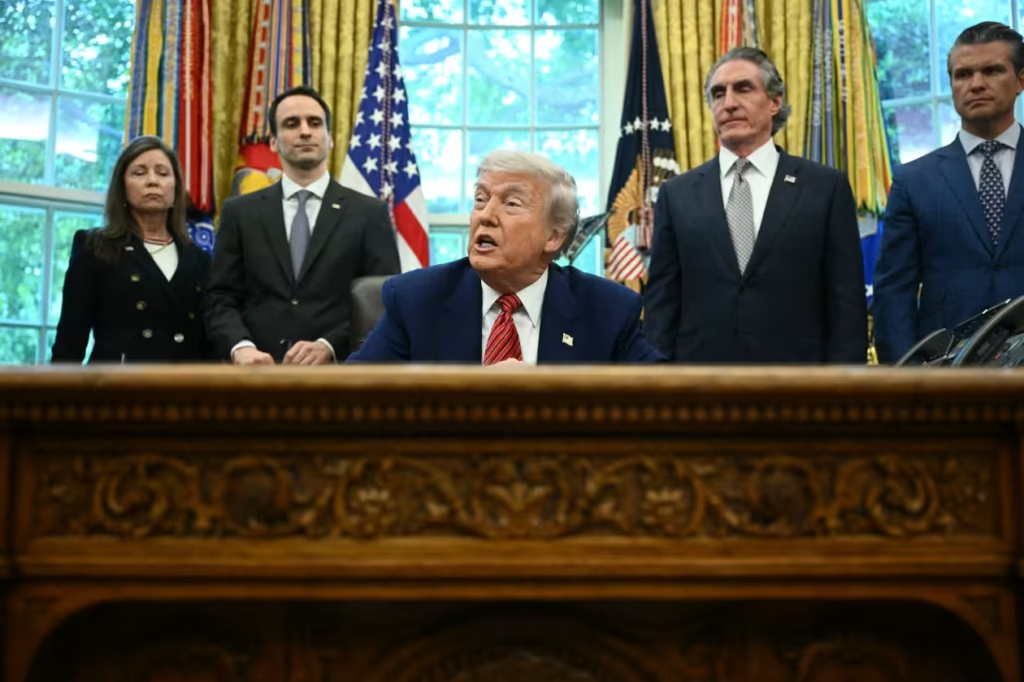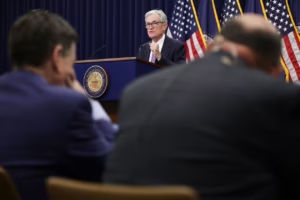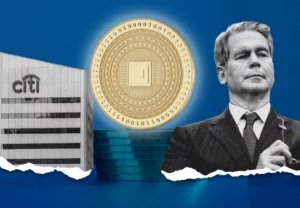President Donald Trump of the United States threatened to impose new tariffs on the European Union and smartphone manufacturers on Friday, claiming that the trade discussions are “going nowhere” and that the EU would be subject to a 50% charge on June 1.
Trump stated that Apple Inc. (AAPL) will be subject to an import tax of “at least 25%” on any iPhones that are not manufactured in the United States. Subsequently, he stated that his trade action would be directed on Samsung Electronics Co. (KR:005930) “and anybody that makes that product,” with an estimated date of late June.
According to analysts at Evercore ISI, Trump’s action with Apple seems to be connected to his administration’s attempts to impose tariffs on the semiconductor industry. Section 232 investigations are being conducted in the chip, pharmaceutical, and other industries.
“The 232 investigation on semiconductors is already in train, and is likely to include some derivative products, including potentially iPhones,” the Evercore team stated in a note on Friday. The news of today serves as yet another reminder that numerous sectoral probes are in progress, including those involving vital minerals, trucks, pharmaceuticals, and semis. We assume that these examinations will end with an initial rate of 25% and subsequent accommodations.
Although authorities at the time emphasized that smartphones and other gadgets will soon be subject to their own semiconductor-focused charges, the Trump administration in April exempted these items from its newly announced tariffs.
Related: Trump threatens to impose tariffs on iPhones, causing Apple’s stock to plummet. This is the reason it is misguided.
Meanwhile, since Trump announced on April 9 a 90-day halt to the far higher import taxes he had implemented on April 2, the E.U. and the majority of U.S. trading partners have been subject to a 10% baseline American duty on their goods. When the 90-day truce expires on or around July 8, trading partners want to reach trade agreements with the Trump administration to avoid reimposition of the higher tariffs.
Treasury Secretary Scott Bessent expressed his optimism that Trump’s Friday morning warning against the European Union will “light a fire under the E.U.” in an interview with Fox News.
“I believe the president believes that the E.U. proposals have not been of the same quality that we’ve seen from our other important trading partners,” Bessent stated. “So I think this is a response just to the E.U.’s pace.”
Trump stated that the government was “going to see what happens” but that as of right now, the trade group will be whacked with the charge on June 1 when asked Friday afternoon if there is anything the EU can do to prevent a 50% tariff. In the White House, the president told reporters, “That’s the way it is,” as he signed executive orders to support the nuclear power sector.
Trump has a track record of raising tariffs and then lowering them. Evercore’s analysts said it’s “easy to see how conversations over the next week could lead Trump to pull back on the 50% rate,” but that it’s “also possible he could implement them at least temporarily to bolster the credibility of his threats.”
According to Vanguard strategist John Madziyire, Friday’s market reactions weren’t particularly strong because of the previous experiences traders had with Trump’s trade disputes. Despite closing lower, the S&P 500 index SPX was still much above its session low.
Madziyire told Dow Jones Newswires, “It’s kind of like ‘The Boy Who Cried Wolf,'” alluding to the well-known tale. According to him, “the administration is not crazy, they have a plan, and there is a limit” to how far they can go.





